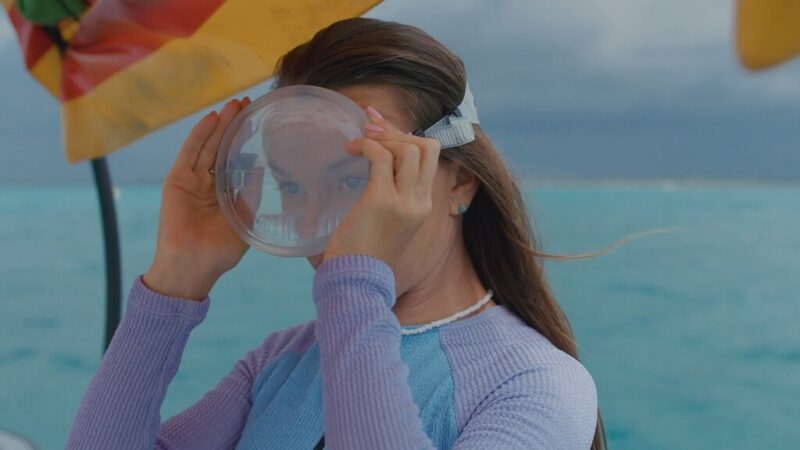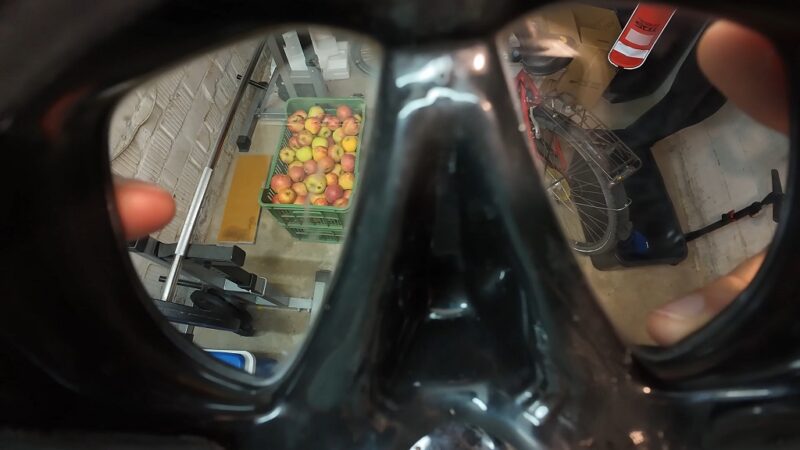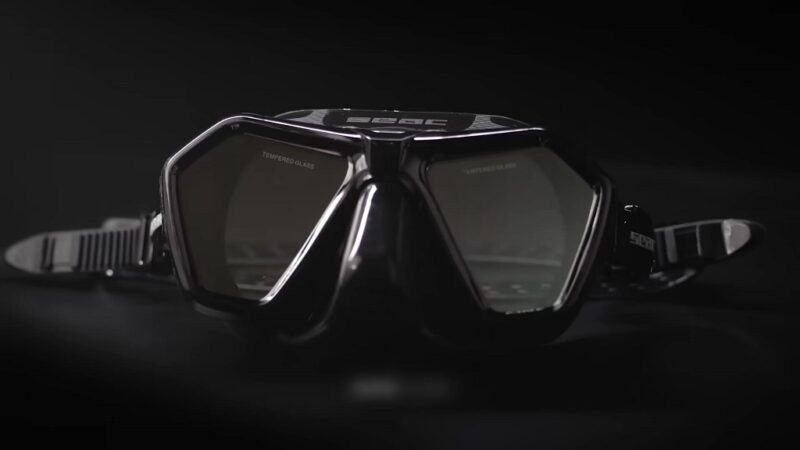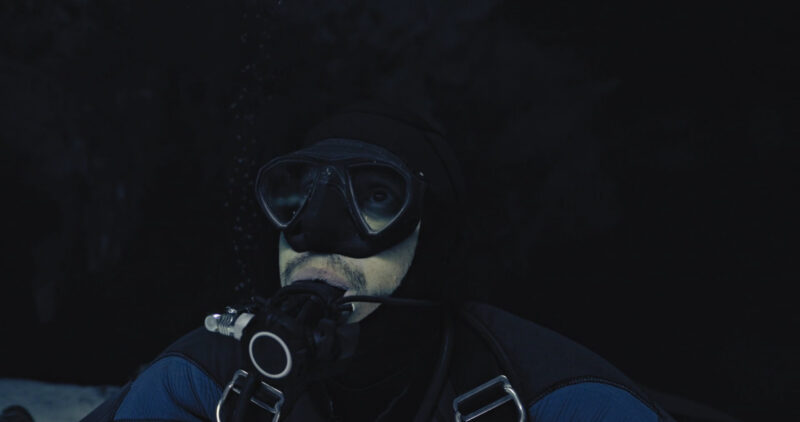When I first started diving, I had no idea how important a well-fitting scuba mask could be. On one of my earlier dives, I spent more time clearing water out of my mask than enjoying the incredible sights around me.
After that, I quickly realized that the right mask can make a huge difference. It is not just about comfort; it is about making your entire dive experience smoother and safer.
If you have ever been underwater and had to deal with fogged lenses or a poor seal, you know what I mean. Finding a mask that fits your face perfectly, provides a wide field of view, and stays fog-free lets you focus on what really matters – The underwater world waiting for you.
This guide covers the most important features to look for when choosing a high-quality scuba mask.
Most Important Features of Scuba Mask
- Fit and comfort
- Tempered glass lenses
- Low-volume design
- Wide field of vision
- Silicone skirt material
- Frameless vs. framed
- Easy adjustability
- Corrective lens compatibility
- Anti-fog coating
- Durability and maintenance
1. Fit and Comfort

A comfortable mask is like a second skin. You should barely notice it is there. It needs to create a perfect seal without digging into your face or leaving red marks after the dive.
Finding the right fit is personal. Everyone’s face shape is different, and the same mask that works for one person might not be great for someone else. Take your time when choosing, and do not be afraid to try on different ones.
Here are some models I find especially comfortable:
- SCUBAPRO Synergy 2 Trufit: Soft silicone that adapts to different face shapes, creating a solid seal without sacrificing comfort.
- Aqua Lung Plazma: This one is all about reducing pressure with stability zones in the silicone skirt. You can dive for hours without feeling like the mask is squeezing your face.
- Atomic Aquatics Subframe: It’s tough and durable but still comfortable, thanks to its flexible skirt that molds perfectly to your face.
2. Tempered Glass Lenses

You do not really appreciate how important clear vision is underwater until you are wearing a mask with foggy, scratched lenses. Tempered glass lenses are the real deal. They give you the clarity you need while being tough enough to handle the pressure and the rough handling that can happen during dives.
Here are a few masks known for their tempered glass lenses:
- Cressi SF1: Simple, frameless design with a large, single lens made from tempered glass. It gives you a clear view while being sturdy enough for all your dives.
- Aqua Lung Sphera X: This one has specially curved tempered glass lenses, offering a distortion-free, 180-degree field of view.
- Dive Rite ES170: With wide, teardrop-shaped tempered glass lenses, this mask is great for visibility while maintaining a low internal volume for easy clearing.
3. Low-Volume Design
If you have ever had to stop mid-dive to constantly clear your mask, you know how annoying that can be. That is where a low-volume mask comes in. These masks have a smaller internal air space, which means they sit closer to your face.
With a low-volume mask, you get a better field of vision. The lenses are positioned closer to your eyes, making everything underwater look a bit clearer and more expansive.
It is one of those features you might not think about until you experience it for yourself, but once you do, you will never want to go back to a bulky, high-volume mask again.
These are the models that provides the best visibility:
- Atomic Aquatics Subframe: A low-volume mask that still offers a solid, durable build with fantastic visibility.
- Cressi SF1: Frameless and low-volume, this mask gives you a wide field of vision and is incredibly easy to clear.
- IST Sports Atum Mask: With its ultra-low-volume design, this mask is perfect for easy equalizing and gives you a wide, uninterrupted view.
4. Wide Field of Vision

A mask that gives you an expansive view makes all the difference when you are exploring. A wider view lets you take in more without turning your head constantly. Masks with single lenses or specially designed side windows are great for this.
Here are a few masks that excel at offering a wide field of vision:
- TUSA Freedom Elite: This mask has a single large lens and a frameless design, providing a broad, uninterrupted view.
- Seac Ajna: Featuring a frameless design and a deep, wide lens, it gives you an optimal view while keeping the mask light and easy to clear.
- Gull Ventia: This low-profile mask sets the lenses close to your eyes, expanding your field of view, especially on the sides.
5. Silicone Skirt Material
High-quality silicone is the gold standard for scuba masks. It provides a soft, comfortable fit while ensuring a strong seal to prevent leaks. Silicone skirts are durable, flexible, and they last a lot longer than other materials like rubber.
The softness and flexibility of silicone allow the skirt to mold to different face shapes, which is crucial for getting that watertight seal. A good silicone skirt should feel comfortable even after hours underwater.
Here are some models I find incredibly comfortable:
- Mares X-Vision: This mask is popular for its soft silicone skirt that provides a secure, comfortable fit for various face shapes.
- Sherwood Targa: Specifically designed for smaller faces, this mask features a soft silicone skirt that ensures a tight seal and avoids discomfort, even on long dives.
- Beuchat Maxlux S: With a super-soft silicone skirt, this mask offers a great fit with a very low internal volume, ideal for both beginners and experienced divers.
6. Frameless vs. Framed

Frameless masks have become more popular in recent years for their lighter feel and closer fit. Because there is no rigid frame holding the lenses in place, frameless masks sit closer to your face, offering better peripheral vision and reducing bulk. They are also easier to pack since they can be folded up more compactly.
On the other hand, framed masks tend to be a bit more durable. The frame adds structure, making the mask a bit sturdier. If you ever need to replace lenses or other parts, it is usually easier with a framed mask.
I actually own both models. The frameless one is Hollis M1, while the one with a frame is Cressi Big Eyes Evolution.
7. Easy Adjustability

When you are diving, you do not want to waste time fiddling with straps or dealing with a mask that is too loose or too tight. That is why easy adjustability is a key feature in any good scuba mask.
A simple, reliable adjustment system can save you from the frustration of having to constantly readjust your mask during a dive.
Here are a few masks with excellent adjustability:
- TUSA Freedom HD: This mask features a quick-adjust strap system that makes getting the perfect fit easy, even with thick gloves.
- Seac Eagle: Known for its user-friendly buckle system, this mask allows for fast, hassle-free adjustments and stays securely in place during long dives.
- Aqua Lung Teknika: Designed for technical divers, this mask offers an easy-to-use buckle system that makes it simple to adjust the fit, even in the middle of a dive.
8. Corrective Lens Compatibility
Wearing contacts underwater can be a hassle, and trying to make do without your glasses is not even an option. Thankfully, many modern masks allow you to insert prescription lenses so you can enjoy clear vision.
Here are a few masks compatible with corrective lenses:
- TUSA Freedom CEOS: This mask offers a quick and easy lens replacement system, allowing you to fit corrective lenses without hassle.
- Sherwood Rona: Designed with prescription lens compatibility in mind, this mask is a great choice for divers who need clear underwater vision.
- Mares X-VU: This mask allows for easy installation of prescription lenses, ensuring you get the clarity you need during your dive.
9. Anti-Fog Coating

Fogging is one of the most frustrating things that can happen during a dive. It blocks your vision and forces you to either constantly clear your mask or cut your dive short. That is why having a mask with an anti-fog coating can make all the difference.
Anti-fog coatings work by preventing condensation from forming on the lenses.
While you can always apply anti-fog sprays or gels, getting a mask with this feature built-in saves you the hassle.
Here are a few masks that feature anti-fog coating or are known for staying fog-free:
- Cressi F1: Known for its wide, single lens and naturally fog-resistant design, this mask offers great visibility without frequent fogging.
- IST Pro Ear: This mask not only protects against fog but also helps keep your ears dry, making it perfect for divers with sensitive ears.
10. Durability and Maintenance

A good mask should be able to handle the wear and tear of regular diving. Masks made from high-quality materials like tempered glass lenses and silicone skirts tend to last much longer than cheaper, plastic-based options.
Maintenance is also key to keeping your mask in good shape. Regular cleaning after each dive, storing it in a cool, dry place, and avoiding direct sunlight will extend its life significantly.
Here are a few masks known for their durability and ease of maintenance:
- Scubapro D-Mask: Built for all types of diving, this mask is designed with long-lasting materials and is easy to maintain.
- Atomic Venom Frameless: Known for its strong construction and UltraClear lenses, this mask is made to handle heavy use while remaining easy to clean.
- Beuchat Maxlux S: Built from highly durable materials, it has a low-profile design while being robust enough to last through many dives.
FAQs
Can I use a snorkel mask for scuba diving?
It is not recommended to use a standard snorkel mask for scuba diving. Scuba diving requires masks designed to withstand the pressure of deeper depths. Snorkel masks are typically built for surface use and may not seal as well at depth. For diving, always choose a mask specifically designed for scuba.
How can I prevent my mask from fogging?
While anti-fog coatings help, there are a few tricks you can use. Rinsing your mask in fresh water before the dive helps, and applying a small amount of baby shampoo or a commercial anti-fog solution inside the lens can prevent fogging. Some divers even swear by the spit method, where you rub saliva on the inside of the lens, then rinse it off.
Do I need to buy a specific mask for cold-water diving?
If you are diving in cold water, you might want a mask designed for that environment. Full-face masks can provide extra warmth by covering your entire face. Additionally, look for masks with a secure seal that can handle more extreme temperatures and help prevent fogging, which is more common in cold water.
How often should I replace my scuba mask?
A scuba mask should last several years with proper care, but signs that you may need to replace it include a deteriorating skirt, cracked lenses, or leaks that you cannot fix with adjustments. If the mask feels uncomfortable or does not seal well anymore, it is time for a replacement. Regular maintenance can extend its life, but always inspect it before each dive to ensure it is in good condition.
Summary
Choosing the right scuba mask means more than just picking something off the shelf. It impacts how comfortable, safe, and enjoyable your dives will be. A proper fit, tempered glass lenses, and a low-volume design are all crucial features that can make or break your dive experience.
The better the mask fits your face and diving style, the more you will enjoy your time underwater. Now that you know what to look for, you can choose a mask that will enhance every dive, letting you focus on the beauty of the ocean.

